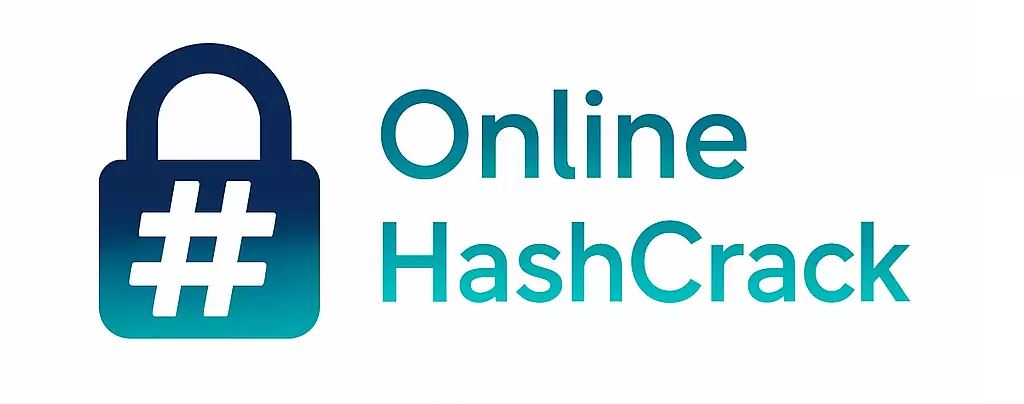1. Introduction
Pretty Good Privacy (PGP) stands as a cornerstone in the world of cryptography algorithms and secure digital communication. Since its inception, PGP has empowered individuals and organizations to protect sensitive information, authenticate identities, and ensure the integrity of their data. In this comprehensive overview and analysis, we will delve into the history, principles, technical workings, strengths, vulnerabilities, and modern relevance of PGP. Whether you are a cybersecurity professional, a privacy advocate, or simply curious about encryption, this article will provide a thorough understanding of PGP and its role in today’s digital landscape.
2. What is Pretty Good Privacy (PGP)?
Pretty Good Privacy (PGP) is an encryption program that provides cryptographic privacy and authentication for data communication. Designed to secure emails, files, and other forms of digital communication, PGP leverages a combination of symmetric and asymmetric cryptography to ensure that only intended recipients can access the information. Its unique approach to key management and trust has made it a widely adopted standard in the field of cryptography algorithms.
2.1 Historical Background
PGP was created in 1991 by Phil Zimmermann, a software engineer and privacy activist. At the time, Zimmermann sought to provide individuals with a tool to safeguard their communications against surveillance and unauthorized access. The release of PGP sparked significant controversy, as it was classified as a munition under U.S. export laws, leading to a prolonged legal battle. Despite these challenges, PGP’s open-source nature and robust security led to widespread adoption and the eventual development of the OpenPGP standard.
For more on the history of PGP, see ISACA: Pretty Good Privacy (PGP).
2.2 Purpose and Use Cases
The primary purpose of PGP is to provide confidentiality and authentication in digital communications. Its use cases include:
- Email encryption to protect sensitive correspondence.
- File encryption for secure storage and transfer.
- Digital signatures to verify the authenticity and integrity of documents.
- Secure messaging in various applications and platforms.
3. Core Principles of PGP
PGP is built upon four fundamental principles that underpin its effectiveness as a cryptography algorithm:
3.1 Confidentiality
Confidentiality ensures that only authorized parties can access the content of a message or file. PGP achieves this by encrypting data using a combination of symmetric and asymmetric encryption, making it nearly impossible for unauthorized users to decipher the information without the correct key.
3.2 Authentication
Authentication verifies the identity of the sender, ensuring that the message truly originates from the claimed source. PGP uses digital signatures to provide this assurance, leveraging public-key cryptography to bind a sender’s identity to their message.
3.3 Integrity
Integrity guarantees that the message has not been altered in transit. PGP employs cryptographic hash functions to generate a unique fingerprint for each message, allowing recipients to detect any unauthorized modifications.
3.4 Non-repudiation
Non-repudiation prevents the sender from denying their authorship of a message. By using digital signatures, PGP ensures that a sender cannot later claim they did not send a particular message, providing a strong form of accountability.
4. How PGP Works
Understanding how Pretty Good Privacy operates requires an exploration of its cryptographic mechanisms, key management, and trust models.
4.1 Symmetric vs. Asymmetric Cryptography
PGP combines the strengths of symmetric and asymmetric cryptography:
- Symmetric encryption uses a single secret key for both encryption and decryption. It is fast and efficient for large data volumes.
- Asymmetric encryption uses a pair of keys: a public key for encryption and a private key for decryption. It facilitates secure key exchange and digital signatures.
4.2 Key Generation
Each PGP user generates a key pair consisting of a public and private key. The public key is shared openly, while the private key is kept secret. Key generation typically involves strong random number generators to ensure cryptographic strength. Users may also create a key revocation certificate to invalidate compromised keys.
For best practices in key management, refer to CISA: Cryptographic Key Management.
4.3 Encryption and Decryption Process
The PGP encryption process involves several steps:
- The sender creates a message and generates a random session key for symmetric encryption.
- The message is encrypted using this session key.
- The session key is then encrypted with the recipient’s public key.
- The encrypted message and encrypted session key are sent to the recipient.
- The recipient uses their private key to decrypt the session key, then uses the session key to decrypt the message.
4.4 Digital Signatures
To provide authentication and integrity, PGP allows users to sign messages:
- The sender generates a hash of the message using a cryptographic hash function.
- This hash is encrypted with the sender’s private key, creating a digital signature.
- The recipient can verify the signature by decrypting it with the sender’s public key and comparing the hash to a newly computed one.
4.5 Web of Trust Model
Unlike traditional Public Key Infrastructure (PKI) systems, PGP uses a Web of Trust model for key validation. In this decentralized approach:
- Users sign each other’s public keys, vouching for their authenticity.
- Trust is established through a network of signatures, rather than a central authority.
- Each user decides whom to trust and to what extent.
5. PGP Algorithms and Standards
Pretty Good Privacy supports a range of cryptographic algorithms and adheres to established standards to ensure interoperability and security.
5.1 Supported Encryption Algorithms
PGP supports multiple encryption algorithms to accommodate different security needs:
- Symmetric algorithms: AES, Triple DES, CAST5, IDEA, Blowfish, and Twofish.
- Asymmetric algorithms: RSA, DSA, and ElGamal.
For algorithm recommendations, see NIST SP 800-131A: Transitioning the Use of Cryptographic Algorithms and Key Lengths.
5.2 Hash Functions Used
PGP relies on cryptographic hash functions for digital signatures and integrity checks. Commonly used hash functions include:
- SHA-1 (now deprecated for new applications due to vulnerabilities)
- SHA-2 family (SHA-256, SHA-384, SHA-512)
- RIPEMD-160
For more on hash function security, refer to OWASP: Cryptographic Storage Cheat Sheet.
5.3 RFCs and OpenPGP Standard
The OpenPGP standard (RFC 4880) defines the format and behavior of PGP-compatible systems, ensuring interoperability across different implementations. OpenPGP is maintained by the Internet Engineering Task Force (IETF) and is the basis for most modern PGP software.
For the official specification, see IETF RFC 4880: OpenPGP Message Format.
6. Implementations and Tools
Numerous PGP implementations and tools are available, catering to a wide range of platforms and use cases.
6.1 Popular PGP Software
Some of the most widely used PGP software includes:
- GnuPG (GPG): A free, open-source implementation of the OpenPGP standard, available for Linux, Windows, and macOS.
- Symantec Encryption Desktop: A commercial solution offering advanced features and enterprise integration.
- PGP Command Line: Tools for automating encryption and decryption in scripts and workflows.
For a list of OpenPGP-compatible software, see OpenPGP.org: Software.
6.2 Integration with Email Clients
PGP can be integrated with popular email clients to provide end-to-end encryption:
- Thunderbird with the Enigmail or native OpenPGP support.
- Outlook via third-party plugins such as Gpg4win.
- Apple Mail using GPGTools.
6.3 PGP on Modern Platforms
PGP is available on a variety of platforms, including:
- Desktop operating systems (Windows, macOS, Linux)
- Mobile devices (via apps like OpenKeychain for Android and iPGMail for iOS)
- Web-based services (ProtonMail, Mailvelope browser extension)
7. Security Analysis of PGP
A thorough security analysis of Pretty Good Privacy highlights its strengths, known vulnerabilities, and best practices for secure usage.
7.1 Strengths and Advantages
PGP offers several significant advantages:
- Strong encryption using robust algorithms and key lengths.
- Decentralized trust model via the Web of Trust, reducing reliance on central authorities.
- Open standards and source code, enabling transparency and community-driven improvements.
- Wide adoption and compatibility across platforms and applications.
7.2 Known Vulnerabilities and Attacks
Despite its strengths, PGP is not immune to vulnerabilities:
- Key management risks: Loss or compromise of private keys can undermine security.
- Implementation flaws: Vulnerabilities in specific software (e.g., GnuPG bugs) can be exploited.
- Side-channel attacks: Attackers may exploit timing or power consumption data to extract keys. For more on these threats, explore side-channel attack defense methods.
- Metadata leakage: Encrypted messages may still reveal sender, recipient, and timing information.
- EFAIL vulnerability: Disclosed in 2018, this attack exploited email clients' handling of PGP-encrypted emails, potentially exposing plaintext. See BleepingComputer: EFAIL PGP and S/MIME Bugs.
For ongoing vulnerability tracking, consult CVE Details: GnuPG Vulnerabilities.
7.3 Best Practices for Secure Usage
To maximize the security of PGP, users should follow these best practices:
- Use strong, unique passphrases for private keys. Consider using a random password generator to ensure your passphrases are robust and difficult to guess.
- Regularly update PGP software to patch vulnerabilities.
- Verify public keys through trusted channels before use.
- Revoke and replace compromised or outdated keys promptly.
- Be aware of metadata leakage and use additional tools to minimize exposure.
- Educate users on phishing and social engineering risks.
8. PGP in Practice
Pretty Good Privacy has found widespread application across various sectors, shaping the way digital privacy and security are maintained.
8.1 Real-World Applications
PGP is used in numerous real-world scenarios:
- Journalists use PGP to protect sources and sensitive information.
- Businesses encrypt confidential communications and intellectual property.
- Government agencies secure classified data and diplomatic correspondence.
- Individuals safeguard personal data and private conversations.
8.2 Legal and Ethical Considerations
The use of PGP raises important legal and ethical questions:
- Export controls: Some countries regulate the export and use of strong cryptography.
- Law enforcement access: Encrypted communications can hinder investigations, leading to debates over backdoors and lawful access.
- Privacy rights: PGP supports the right to privacy, a fundamental human right recognized in many jurisdictions.
8.3 PGP Adoption and Community
The PGP community is active and diverse, encompassing developers, researchers, privacy advocates, and end-users. OpenPGP Working Group and organizations like the OpenPGP Alliance drive ongoing development and standardization. Community-driven resources, mailing lists, and forums provide support and foster innovation.
9. Alternatives and Evolution
While PGP remains a leading cryptography algorithm, several alternatives and evolutions have emerged to address its limitations and adapt to new security challenges.
9.1 S/MIME
S/MIME (Secure/Multipurpose Internet Mail Extensions) is a widely used alternative for email encryption and signing. Unlike PGP’s Web of Trust, S/MIME relies on a hierarchical PKI with trusted certificate authorities. S/MIME is integrated into many enterprise email systems but may be less flexible for individual users.
For more on S/MIME, see Cisco: S/MIME Email Encryption.
9.2 Signal Protocol
The Signal Protocol is a modern cryptographic protocol designed for secure messaging. It employs forward secrecy and deniability, features not natively present in PGP. Signal is used in popular messaging apps like Signal, WhatsApp, and Facebook Messenger, offering robust security for real-time communication.
For an overview, see Rapid7: The Signal Protocol Explained.
9.3 Modern Developments in PGP
PGP continues to evolve in response to emerging threats and user needs:
- Transition to stronger algorithms (e.g., SHA-2, AES-256).
- Improved user interfaces for easier adoption.
- Integration with hardware security modules and smart cards.
- Research into post-quantum cryptography to future-proof encryption. For more on this topic, explore the Post‑Quantum Encryption Guide: Shield Data Now.
10. Conclusion
Pretty Good Privacy (PGP) remains a foundational technology in the realm of cryptography algorithms and secure communication. Its robust combination of symmetric and asymmetric encryption, digital signatures, and decentralized trust has set the standard for privacy and data protection. While PGP is not without challenges—such as usability hurdles and evolving threats—it continues to play a vital role in safeguarding digital information. By understanding its principles, strengths, and limitations, users and organizations can make informed decisions about deploying PGP and related technologies to protect their most valuable assets.
11. Further Reading and Resources
- OpenPGP Alliance
- GnuPG Official Site
- IETF RFC 4880: OpenPGP Message Format
- CISA: Cryptographic Key Management
- SANS Institute: PGP Best Practices
- OWASP: Cryptographic Storage Cheat Sheet
- EFF: Crypto Export Laws
- BleepingComputer: EFAIL Vulnerability
- ENISA: Web of Trust
- CVE Details: GnuPG Vulnerabilities


